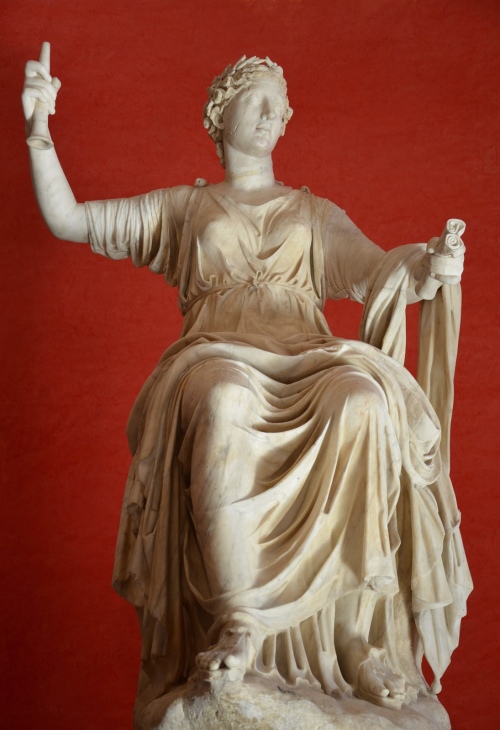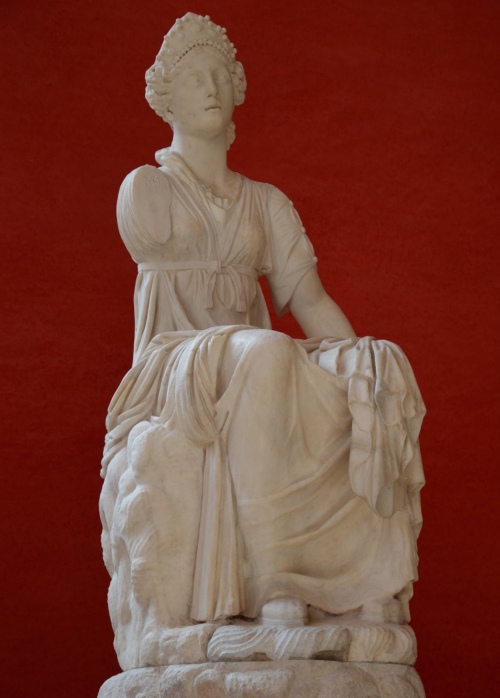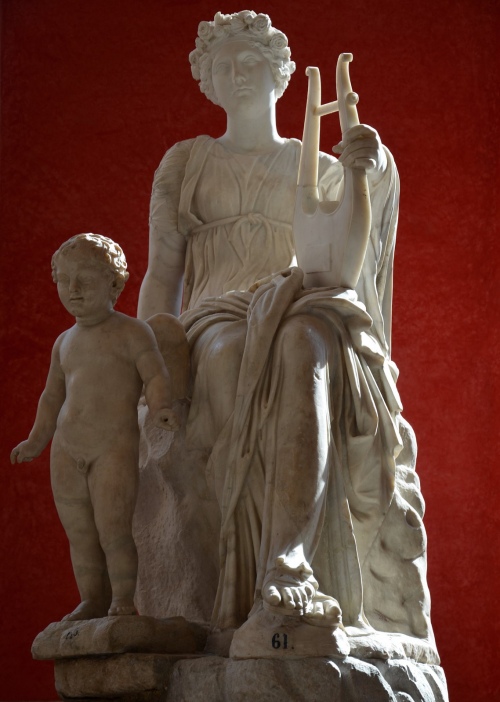This week’s masterpieces from Hadrian’s Villa are eight marble statues depicting seated muses.
In Greek mythology, the Muses were sister goddesses of music, poetry, and other artistic and intellectual pursuits. Poets and other artists often called on them for inspiration. Zeus, the king of the gods, was the father of the Muses. Their mother was Mnemosyne, goddess of memory. It was not until the 1st century BC that each of the Muses began to be related to a specific art. They were worshipped at the Museion of the famous library of Alexandria, from where the modern term “Museum” originates.
The statues were unearthed at Hadrian’s Villa in the 1500′s. They were made at the end of Hadrian’s reign by two Roman workshops reproducing Greek models from the 2nd century BC. The seated muses decorated the scenae frons (stage) of the odeon, a small theatre that could have held around 1,200 people.
The statues are now on display in the Prado Museum in Madrid.
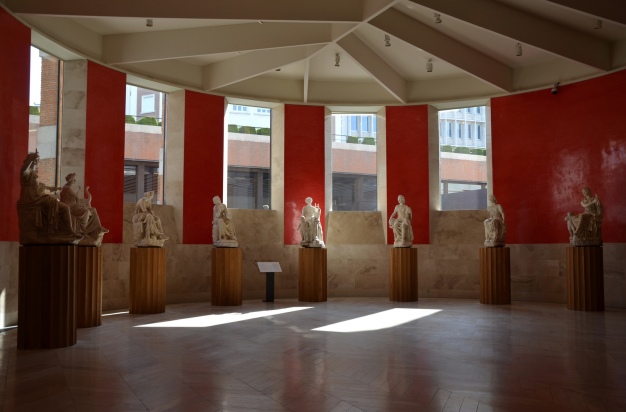
Room of the Muses showing the eight marble statues depicting seated muses that were unearthed in about 1500 at Hadrian’s Villa, Tivoli © Carole Raddato
In about 1670, the statues were acquired by Queen Cristina of Sweden (1626-1689) and exhibited in her palace in Rome. They were later acquired by Philip V of Spain (1683-1746) and reached the Royal Palace of La Granja de San Ildefonso (Segovia) in 1725.
The muses were heavily restored by the Italian sculptor Ercole Ferrata (1610-1686) who gave them new attributes in accordance with the identification they were given at the time. Only Terpsichore, the muse of dancing and choral song, was correctly identified. Due to their lack of original attributes, the exact names of the other muses cannot be identified. They are now on display with their Baroque era names.
Terpsichore
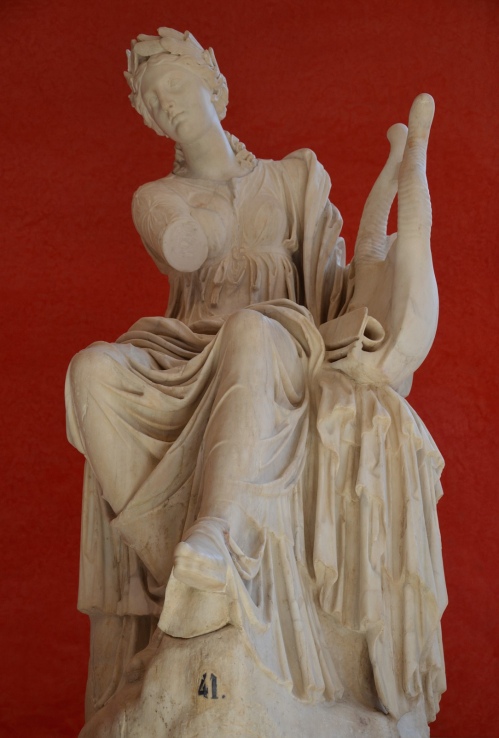
Statue of Terpsichore, Muse of dancing and choral song, unearthed in about 1500 in Hadrian’s Villa, Tivoli © Carole Raddato
Thalia
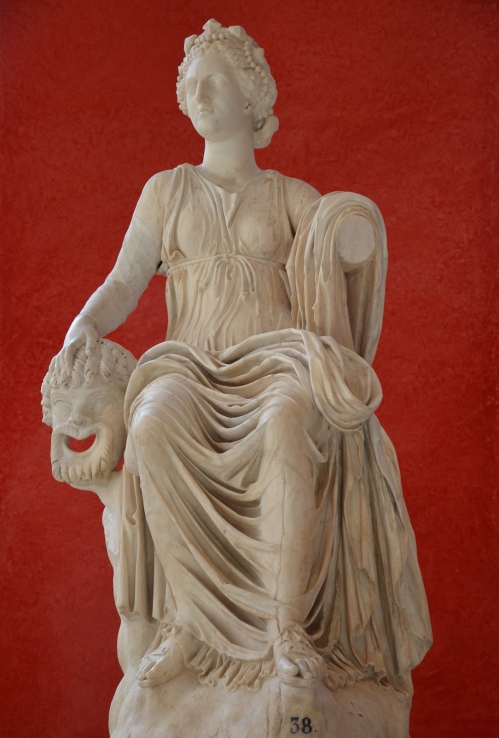
The Muse Thalia bearing a portrait of Queen Cristina, muse of comedy, unearthed in about 1500 in Hadrian’s Villa, Tivoli © Carole Raddato
Calliope
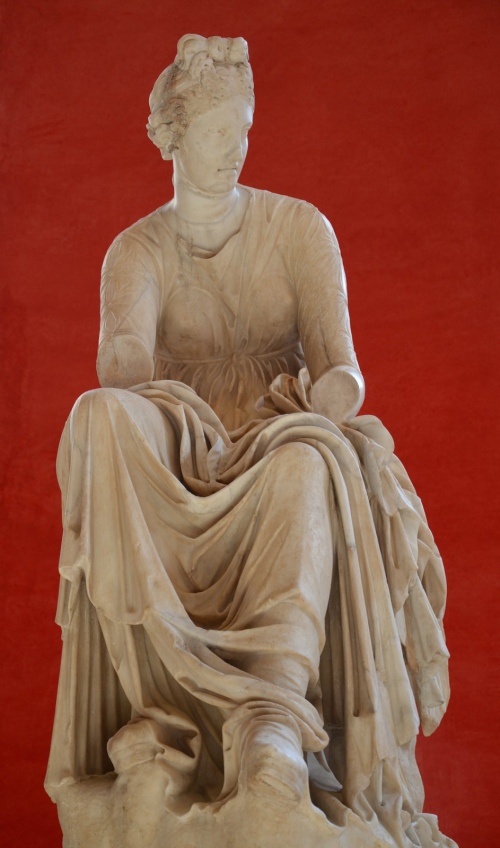
The Muse Calliope with head of Aphrodite, muse of epic poetry, unearthed at Hadrian’s Villa, Tivoli © Carole Raddato
Euterpe
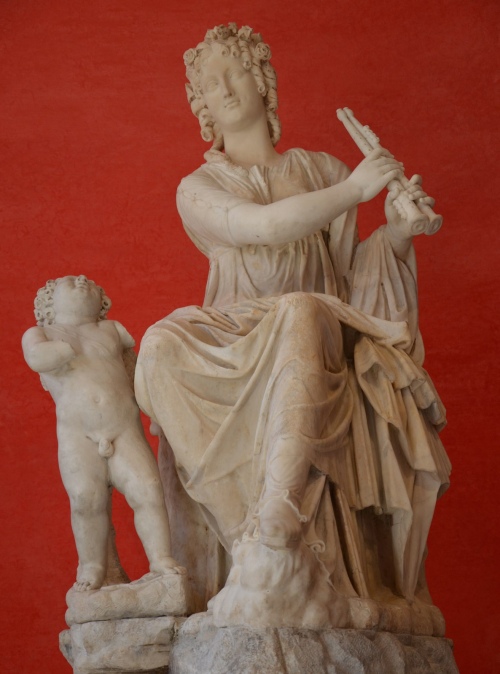
The Muse Euterpe, muse of lyric poetry, she is holding a aulos (double-flute) and has a small Eros at her feet, unearthed at Hadrian’s Villa, Tivoli © Carole Raddato
Urania
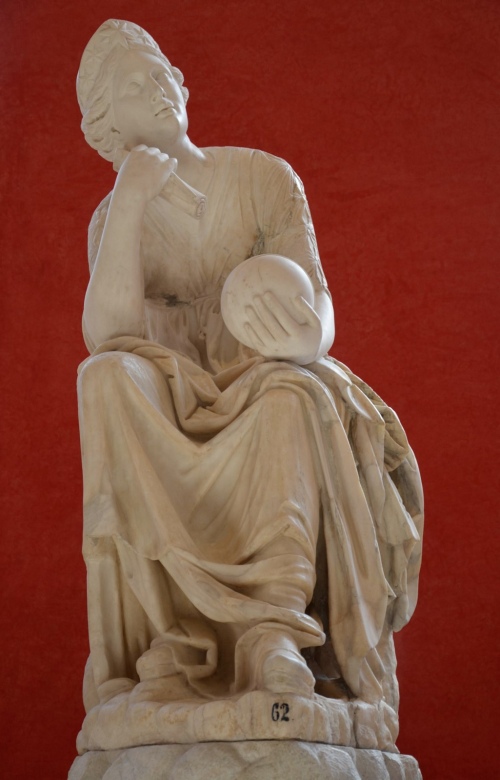
Urania, the muse of astronomy, holding a celestial globe, restored Roman copy of an original from the second century BC, unearthed at Hadrian’s Villa, Tivoli © Carole Raddato
Clio
Polyhymnia
Erato
Source: Following Hadrian
